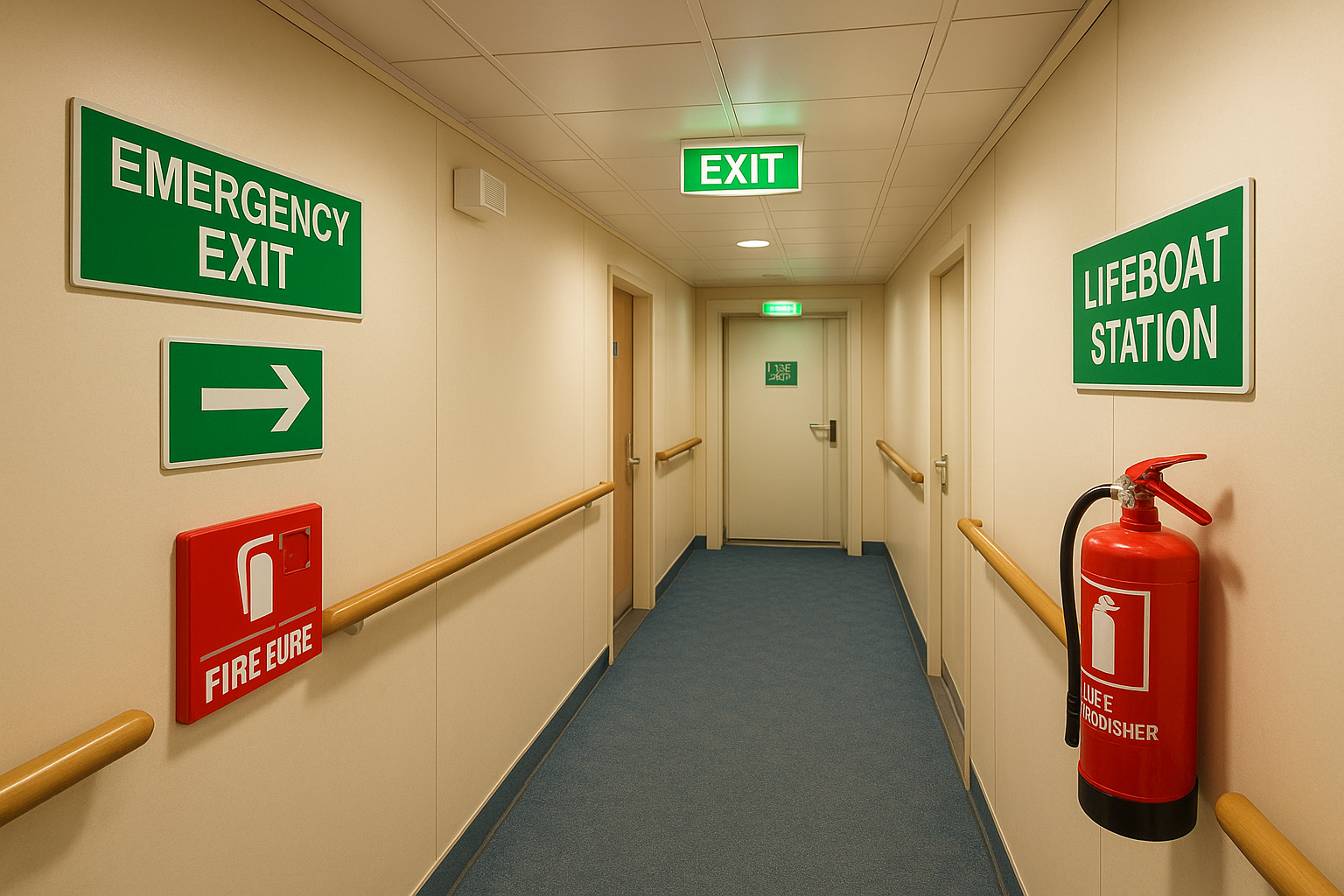
Essential Safety Procedures for Ship Passengers: Lifeboat Stations, Fire Extinguishers, and Emergency Exits
Your Safety Starts With Knowledge
Finding Your Lifeboat Station
Locating Fire Extinguishers
Finding Emergency Exits
Understanding Emergency Alarms
Using Lifejackets Correctly
Staying Calm in Emergencies
What to Do in Different Situations
If you hear the general emergency alarm:
Go to your cabin, grab your lifejacket, and head to your assigned lifeboat station. Don't panic - the crew will guide you through everything.If you see a fire:
Don't try to put it out yourself. Alert a crew member immediately and follow their instructions. The ship's fire suppression systems are designed to handle fires automatically.If you need to evacuate:
Follow the crew's instructions. They know exactly where to go and how to get there safely. Don't try to find your own way - follow their guidance.If you're in your cabin during an emergency:
Stay there until the crew tells you to leave. They'll come to get you when it's safe to move. Don't try to leave on your own.If you're in a public area during an emergency:
Follow the crew's instructions. They'll guide you to the nearest safe area and tell you what to do next.The Bottom Line
Share This Article
Related Articles
Continue reading with these related articles

Ship Safety Drills: What Passengers Need to Know About Emergency Training and Procedures
Learn about ship safety drills and emergency training procedures. Discover what passengers can expect during safety drills, how crews practice emergency procedures, and why these drills are essential for maritime safety.

Bridge Safety Equipment: Weather Detection, Radio Communications, and Emergency Beacons
Discover the advanced safety equipment in the ship's bridge, including weather monitoring, communication systems, and emergency positioning beacons that keep ships safe at sea.

Medical Emergencies at Sea: Onboard Medical Facilities and Emergency Medical Response
Discover how medical emergencies are handled at sea, from onboard medical facilities to helicopter medevac flights. Learn about cruise ship medical centers, hospital ships like USS Mercy and USS Comfort, and emergency medical response procedures.

Flooding Emergencies Onboard Ships: Detection, Response, and Damage Control
Learn about flooding emergencies onboard ships, from detection systems to response procedures. Discover how marine engineers handle seawater strainer failures, bilge alarms, and damage control to keep ships safe at sea.
© 2025 The Salty Mariner. All rights reserved.
